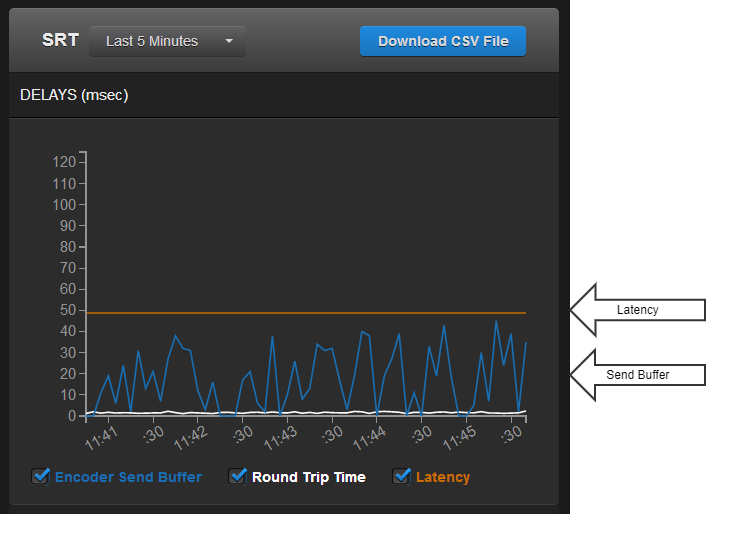Configuring an SRT Stream
With your source and destination devices set up (including having established call modes and any firewall settings), follow these steps to configure an SRT stream:
- Measure the Round Trip Time (RTT) using the ping command.
- If ping does not work or is not available, set up a test SRT stream and use the RTT value from the Statistics page.
- If the RTT is <= 20 ms, the use 20 ms for the RTT value. This is because SRT does not respond to events on timescales shorter than 20 ms.
- Measure the Packet Loss Rate.
- A channel's Packet Loss Rate drives the SRT Latency and Bandwidth Overhead calculations. This loss rate can be extracted from iperf statistics.
- If using iperf is not possible, set up a test SRT stream, and then use the resent bytes / sent bytes (as reported on the SRT stream's Statistics page) over a 60 second period to calculate the Packet Loss Rate as follows:
- Measure the nominal Channel Capacity available to the SRT stream using the iperf utility.
- If iperf does not work or is not available, set up a test SRT stream and use the Max Bandwidth or Path Max Bandwidth value from the Statistics page.
Using the table from section RTT Multiplier, find the RTT Multiplier and Bandwidth Overhead values that correspond to your measured Packet Loss Rate.
- Determine your SRT Latency value using the following formula:
SRT Latency = RTT Multiplier * RTT- If RTT < 20, use the Minimum SRT Latency value in the table mentioned above.
- Determine the stream bitrate.
- The stream bitrate is the sum of the video, audio and metadata essence bitrates, plus an SRT protocol overhead. It has to respect the following constraint:
Channel Capacity > SRT Stream Bandwidth * (100 + Bandwidth Overhead) ÷ 100
If this is not respected, then the video/audio/metadata bitrate on the encoder must be reduced until it is respected. - It is recommended that a significant amount of headroom be added to cushion against varying channel capacity, so a more conservative constraint would be:
0.75 * Channel Capacity > SRT Stream Bandwidth * (100 + Bandwidth Overhead) ÷ 100
- The stream bitrate is the sum of the video, audio and metadata essence bitrates, plus an SRT protocol overhead. It has to respect the following constraint:
- Determine if the SRT stream has been set up correctly.
- The best way to determine this is to set up a test SRT stream and look at the SRT Send Buffer graph on the Statistics page of the source device. The send buffer value should never exceed the SRT Latency boundary. If the two plot lines are close, increase the SRT Latency.
- The best way to determine this is to set up a test SRT stream and look at the SRT Send Buffer graph on the Statistics page of the source device. The send buffer value should never exceed the SRT Latency boundary. If the two plot lines are close, increase the SRT Latency.

